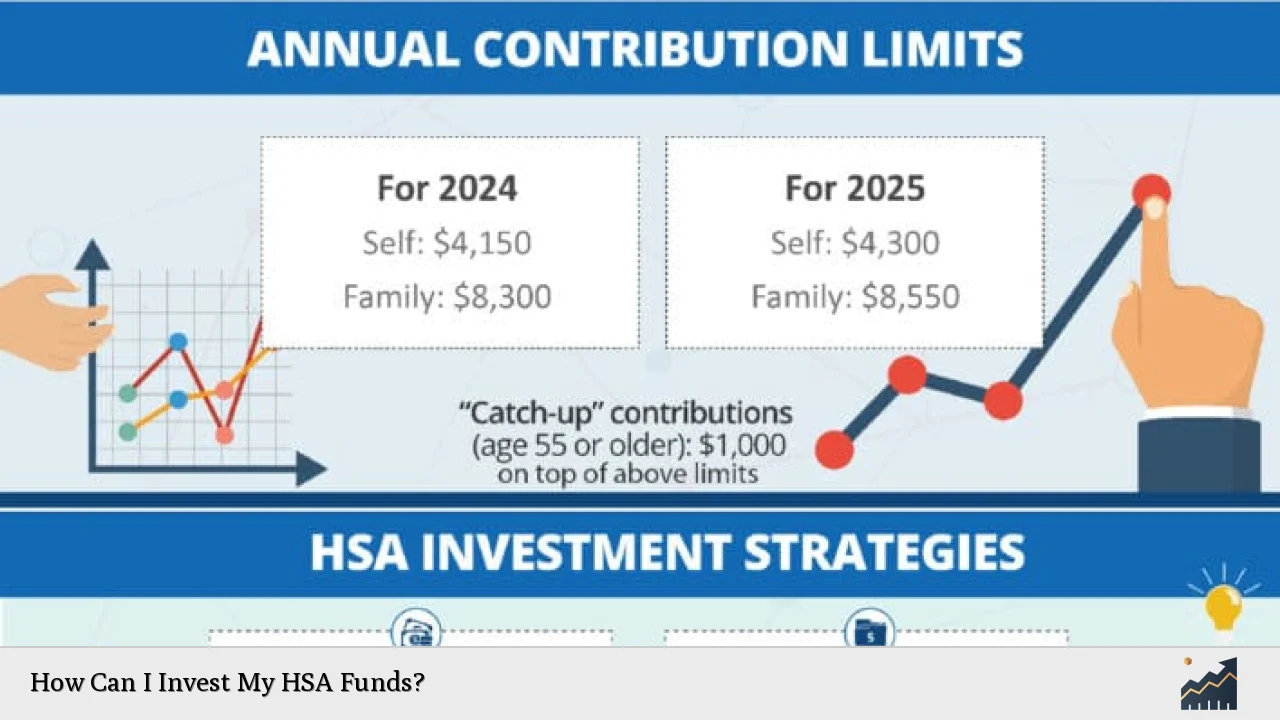Investing your Health Savings Account (HSA) funds can be a strategic way to grow your savings for future medical expenses or retirement. HSAs offer unique tax advantages, making them an attractive option for individuals looking to maximize their healthcare savings while also planning for long-term financial health. Understanding how to effectively invest these funds is crucial for anyone looking to enhance their financial portfolio.
An HSA allows you to contribute pre-tax dollars, which can grow tax-free and be withdrawn tax-free for qualified medical expenses. This triple tax advantage is one of the key benefits of HSAs, distinguishing them from other savings accounts. However, many account holders are unaware of the investment opportunities available within their HSAs. Once you meet the minimum balance required by your HSA provider, you can start investing in various options tailored to your risk tolerance and financial goals.
| Key Benefits | Description |
|---|---|
| Tax Advantages | Contributions are tax-deductible, growth is tax-free, and withdrawals for qualified expenses are tax-free. |
Understanding HSA Investment Options
Once your HSA balance exceeds the required minimum—often around $2,000—you can begin investing. The investment options available may vary depending on your HSA provider but generally include:
- Stocks and ETFs: Investing in individual stocks or exchange-traded funds (ETFs) can offer high returns over time but comes with increased risk. This option is suitable for those with a long-term investment horizon who can withstand market fluctuations.
- Mutual Funds: These funds pool money from multiple investors to purchase a diversified portfolio of stocks and bonds. They are managed by professionals and can be a good choice for those seeking diversification without managing individual investments.
- Bonds: Fixed-income investments like bonds tend to be less volatile than stocks and can provide steady income. They are suitable for conservative investors or those expecting to use their HSA funds in the near term.
- Money Market Funds: These funds invest in short-term debt securities and are generally considered low-risk. They provide liquidity and stability, making them ideal for those who may need quick access to cash for medical expenses.
Choosing the right mix of these options depends on your risk tolerance, investment goals, and time horizon. For example, if you anticipate needing funds soon for medical expenses, you might prioritize safer investments like money market funds or bonds.
Steps to Start Investing Your HSA Funds
Investing your HSA funds involves several steps:
1. Check Your Balance: Ensure that your HSA balance exceeds the minimum required for investing.
2. Review Investment Options: Familiarize yourself with the investment choices offered by your HSA provider. This may include mutual funds, stocks, bonds, and ETFs.
3. Assess Your Risk Tolerance: Determine how much risk you are willing to take based on your financial situation and timeline for needing the funds.
4. Select Investments: Choose a mix of investments that align with your risk profile and financial goals. Consider diversifying across different asset classes to mitigate risk.
5. Monitor Your Investments: Regularly review your investment performance and make adjustments as necessary based on market conditions or changes in your personal circumstances.
6. Withdraw When Necessary: If you need to cover qualified medical expenses, ensure you have a plan in place for liquidating investments without incurring losses during market downturns.
By following these steps, you can effectively manage your HSA investments and work towards maximizing their potential growth.
Investment Strategies for Your HSA
When it comes to investing your HSA funds, several strategies can help optimize your returns:
- Long-Term Growth Strategy: If you do not foresee needing your HSA funds soon, consider a more aggressive investment approach focused on growth-oriented assets like stocks or stock mutual funds. This strategy aims to leverage compound growth over time.
- Balanced Approach: For those with moderate risk tolerance, a balanced portfolio that includes both growth assets (stocks) and income-generating assets (bonds) may be appropriate. This approach helps reduce volatility while still providing growth potential.
- Conservative Strategy: If you expect to use your HSA funds in the near future or have a low risk tolerance, focus on conservative investments such as money market accounts or short-term bond funds. This strategy prioritizes capital preservation over high returns.
- Robo-Advisors: Some HSA providers offer robo-advisors that automatically manage your investments based on your risk profile and goals. This option is ideal for those who prefer a hands-off approach to investing.
Selecting an investment strategy that aligns with your financial goals will help ensure that you make the most of your HSA funds while preparing for future healthcare costs.
Common Mistakes to Avoid When Investing Your HSA Funds
Investing in an HSA can be beneficial, but there are common pitfalls that investors should avoid:
- Neglecting Emergency Needs: Ensure that you maintain sufficient liquidity in your account to cover immediate medical expenses before committing too much to long-term investments.
- Ignoring Fees: Be aware of any management fees associated with mutual funds or investment accounts within your HSA, as these can eat into your returns over time.
- Overly Aggressive Investing: While it may be tempting to invest heavily in stocks for high returns, doing so without considering potential short-term needs can lead to forced sales during market downturns.
- Lack of Diversification: Concentrating too much on one type of investment increases risk. Diversifying across asset classes can help mitigate this risk.
- Not Reviewing Investments Regularly: Failing to monitor and adjust your portfolio as needed can result in missed opportunities or increased exposure to unwanted risks.
By being mindful of these common mistakes, you can better navigate the complexities of investing within an HSA and work towards achieving your financial goals.
FAQs About How Can I Invest My HSA Funds
- What types of investments can I make with my HSA?
You can invest in stocks, mutual funds, ETFs, bonds, and money market accounts depending on what is offered by your provider. - Is there a minimum balance required before I can invest?
Most HSAs require a minimum balance—typically around $2,000—before allowing investments. - Can I withdraw my invested funds at any time?
You can withdraw invested funds when needed for qualified medical expenses but may incur losses if sold during a market downturn. - Are there any tax implications when investing my HSA?
No; all growth within an HSA is tax-free as long as withdrawals are used for qualified medical expenses. - How often should I review my HSA investments?
Regular reviews—at least annually—are recommended to ensure alignment with changing financial goals and market conditions.
Investing your HSA funds wisely allows you not only to prepare for future healthcare costs but also potentially grow wealth over time through strategic asset allocation and management. By understanding the available options and following best practices in investing, you can maximize the benefits of this powerful savings tool while ensuring you’re prepared for unexpected medical expenses.

